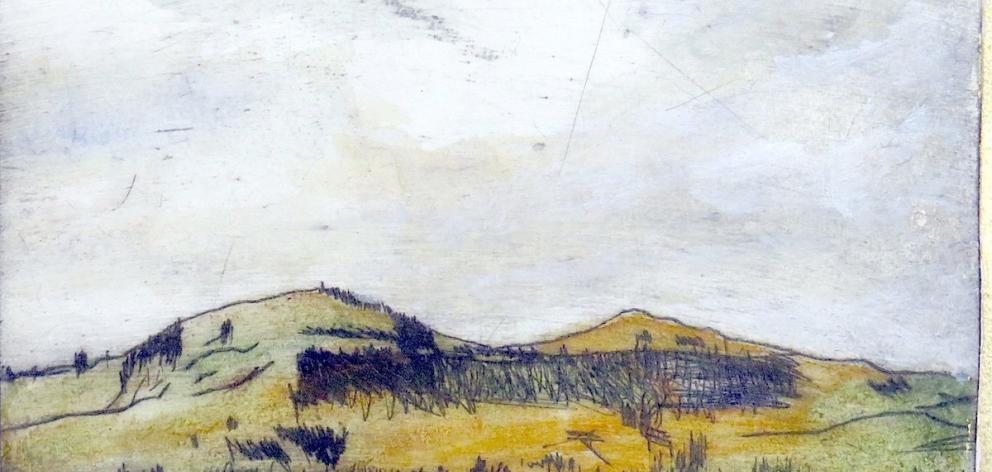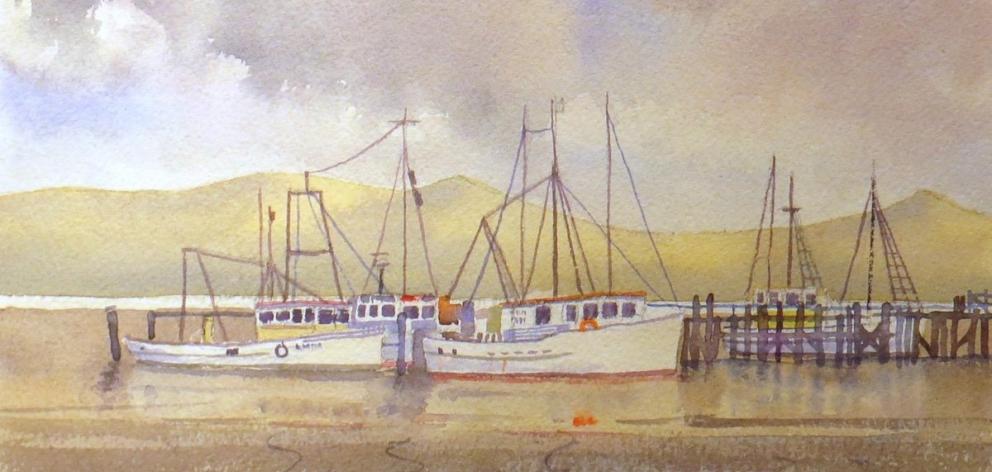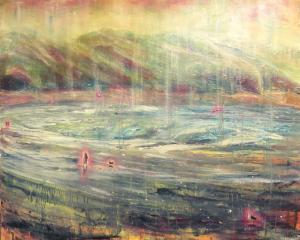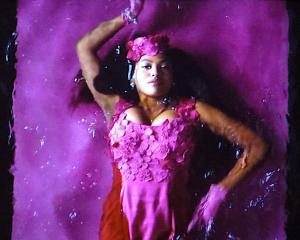In this week's Art Seen, James Dignan looks at works by Kim Pieters, Inge Doesburg, and Ron Esplin.
 The Music of Life’s Temporality, by Kim Pieters.
‘‘Who’s Afraid of Abstract Painting?’’, Kim Pieters (Inge Doesburg Gallery)
The Music of Life’s Temporality, by Kim Pieters.
‘‘Who’s Afraid of Abstract Painting?’’, Kim Pieters (Inge Doesburg Gallery)

Abstract art has a somewhat unfair reputation of being too esoteric and intellectualised, and being at the same time too divorced from reality.
This is especially the case with gestural, ''drawn'' abstracts, where any semblance of geometric or spatial rules seems to have gone, replaced by the free whim of the artist.
In her latest exhibition at Inge Doesburg Gallery, Kim Pieters challenges us to re-examine this idea, to embrace the open freedom of lyrical abstract art.
Pieters works with an underlying philosophy that abstract art is a mirror reversal of language's abstract nouns.
Whereas an abstract noun refers to a concept which cannot directly be pictured, abstract paintings are largely concerned with the facets of existence which are subliminally apparent yet which cannot be named.
As such, despite their appearance, the works form a solid bond with the real world.
Pieters' current work forms several series, each connected by a common title and a common palette.
The artist paints using a process of ''improvised drawing'', a method similar to the automatic painting used by the surrealists, where the design is guided by the subconscious rather than controlled by the conscious mind.
The resulting works, with their mysterious language of line and shape, are endlessly interpretable yet somehow reflect an unknowable yet tangible part of life.
 Saddle Hill, by Inge Doesburg.
‘‘Unexpected Gathering’’ (The Artist’s Room)
Saddle Hill, by Inge Doesburg.
‘‘Unexpected Gathering’’ (The Artist’s Room)

Inge Doesburg is one of four artists who form an unexpected gathering at The Artist's Room. Alongside Doesburg's prints and paintings are works by Alex Lovell-Smith, Tania Bostock and Donna-Marie Patterson.
Doesburg's haunting, gentle Otago landscapes are well-known, but always worth a look. The artist uses a limited palette of rich golds, soft browns, hazy greys, and dark blues to effectively capture the essence of place.
The artist also presents some impressive woodblock prints, in which the grain of the wood has become a major textural element in the work.
Doesburg's works sit surprisingly well alongside the solid, colour-field influenced mixed media abstracts of Bostock.
These pieces overwhelm by their physical presence, especially the circular ''Surrounding Otago II'', with its geometric panels giving the impression of slowly oxidising metal.
Lovell-Smith presents a series of large photographic prints, each one heavily narrative driven, and with a slight darkly sinister edge.
The perfect composition of ''Fixers'' and the somewhat eerie ''The woods'' lead the viewer to create their own back-stories for the activities shown.
Patterson's drawings round out the show. These hand-created geometric abstracts, as well as being impressive for the sheer painstaking work involved, have a hypnotic attraction to them which rewards both close study and repeated viewing.
 Storm Brewing, Carey’s Bay, by Ron Esplin.
‘‘A Portrait of Dunedin/Visions’’, Ron Esplin (Robert Piggott Gallery)
Storm Brewing, Carey’s Bay, by Ron Esplin.
‘‘A Portrait of Dunedin/Visions’’, Ron Esplin (Robert Piggott Gallery)

Ron Esplin presents not one but two exhibitions of his work at Robert Piggott Gallery in Jetty St.
The main display consists of the style of work for which the artist is best-known, a series of gentle landscapes and townscapes, predominantly in watercolour.
The second display is a more experimental yet thoroughly enjoyable series of works based on the braille alphabet.
Watercolour is an excellent, if unforgiving, medium in which to produce images of silhouetted land under soft-edged liquid skies, a feature Esplin exploits well in his series of images of Dunedin and its surrounding districts.
Images like Mirror Morning, Brighton Beach and Yachts, Otago Harbour have a zen-like calm, with some of the works displaying a clear debt to Japanese ukiyo-e images.
In the painting Windswept, Lawyer's Head, the scene is reduced to just hints of land and blocks of colour, yet the atmosphere of the scene is excellently captured.
Esplin's second exhibition is bolder and more surprising. Dedicated to the artist's wife, Julie Woods, who became blind as an adult, the mixed-media works represent words and concepts in both visual and tactile form, with large raised domes presenting titles to each piece in braille.
The pieces are a poignant and loving tribute to Esplin's partner, while simultaneously being fun, tactile, and above all thought-provoking art.








![... we all become all of these things [installation view] (2025), by Megan Brady.](https://www.odt.co.nz/sites/default/files/styles/odt_landscape_small_related_stories/public/story/2025/03/1_we_all_become_all_of_thes.jpg?itok=SH-Q8KJZ)


![Poipoia te Kākano [installation view]. Allison Beck, Megan Brady, Kate Stevens West, Jess...](https://www.odt.co.nz/sites/default/files/styles/odt_landscape_small_related_stories/public/story/2025/02/1_poipoia_te_k_kano.jpg?itok=_BEDlada)

